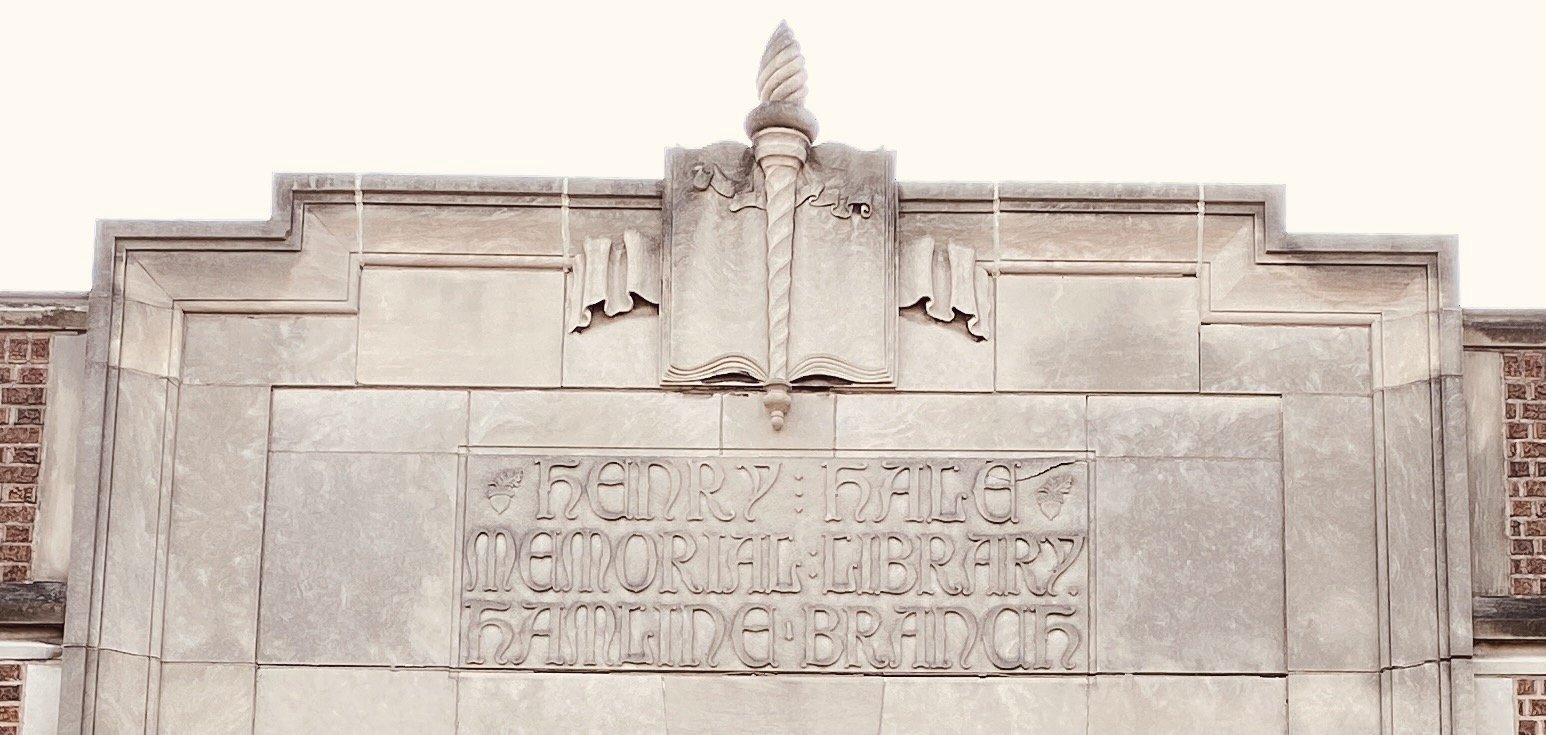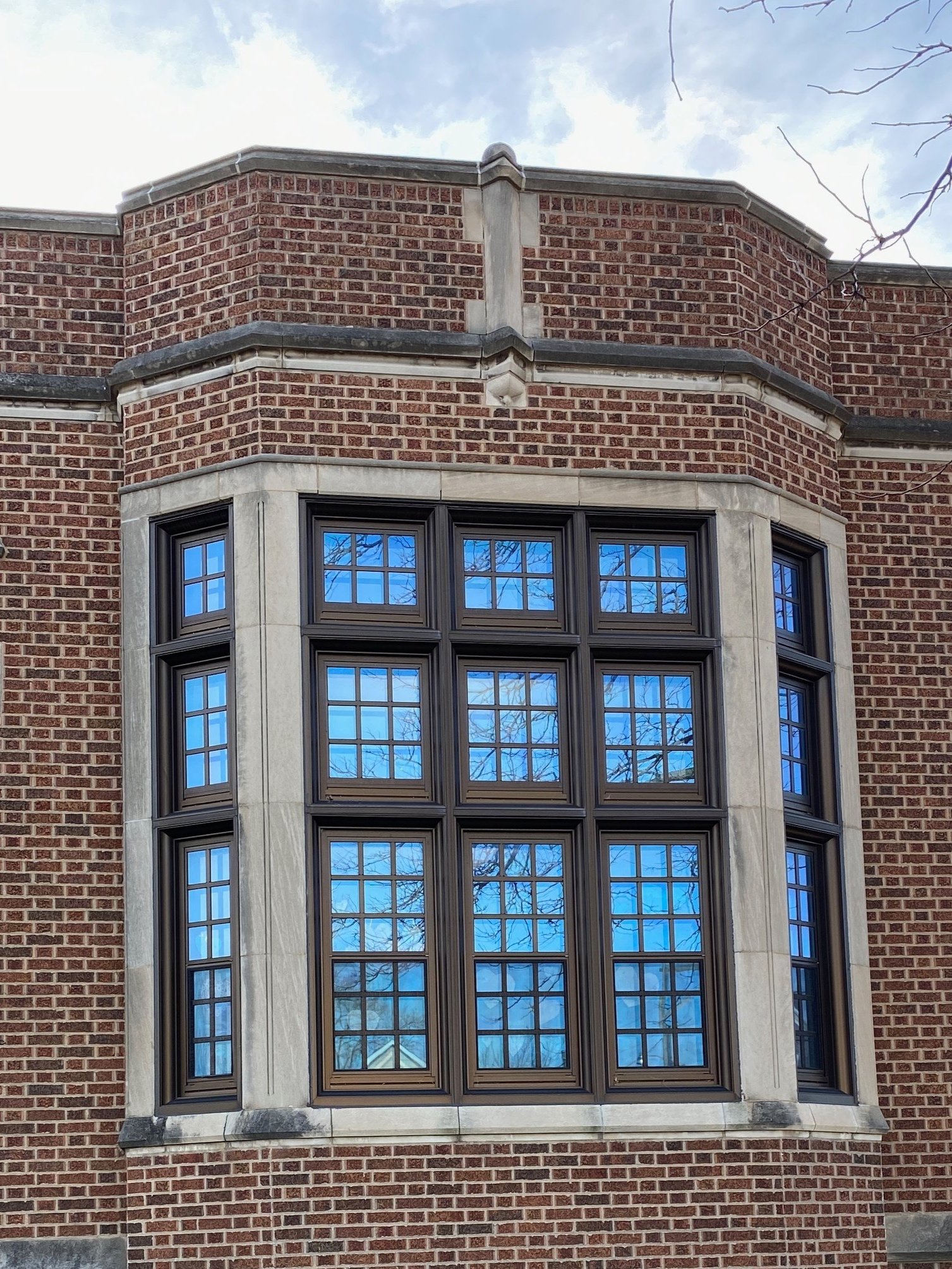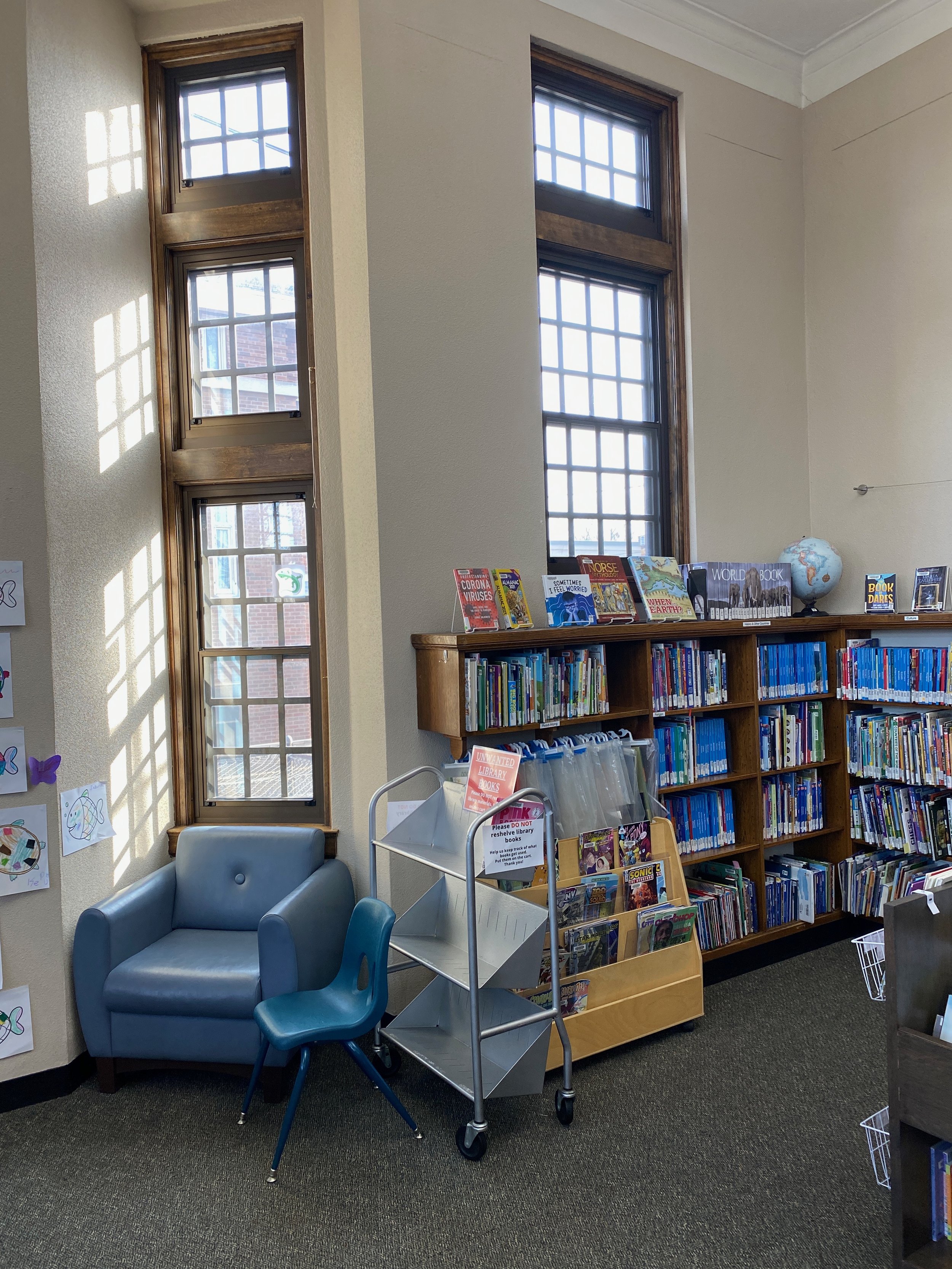Groceries, hats, and books
The story of the Hale Memorial Library, Hamline Branch, begins in 1890 when Henry Hale, St. Paul attorney and property owner, wrote a clause into his will that left a bequest for the City of St. Paul to use funds from his estate to build a free library and a free medical dispensary. The funds were to become available 25 years after his death, but the financial panic of 1893 left the fund in trouble, as it was dependent on the value of the properties Hale owned. Mary Fletcher Hale, his wife, came to the rescue by tapping her own family inheritance to bolster the fund.
In the meantime the Hamline neighborhood continued to advocate for a permanent library building. The Saint Paul Public Library established “lending stations” (or “delivery stations”) in various neighborhoods around the city. In 1908 the first Hamline area station was formed and housed in a millinery (hat) shop at 720 Snelling Avenue North. The station moved six times before 1930, and the last location was at the corner of Snelling and Van Buren.
The last storefront "Hamline Branch"
A young borrower leaving the "Hamline Branch storefront
A library book exhibit in a storefront window
Reading in a lending station
A new home for the library
In 1929, local architect Carl H. Buetow prepared three preliminary sketches for a new Hale Memorial Library, Hamline Branch building. He was working in the Education Department of the City Architect’s office, designing schools. His preliminary designs were in colored pencil on paper, and are now in the Carl H. Buetow Papers at the Northwest Architectural Archives at the University of Minnesota Libraries.
The final, original drawings for the building contain his signature, and the design was altered to add more windows along with subtle features such as a carved stone torch & open book above the entrance, and carved stone rosettes and medallions along the facade on three sides. Construction on the new library building began in January, 1930 and the formal dedication was held on October 9, 1930.
1928 Real Estate atlas showing site of last storefront "Hamline Branch"
Front elevation sketch, preliminary, by Carl Buetow
Image from one of the original drawings for the Hamline Branch Library containing architect [Carl H.] Buetow's signature
Image of the torch above the Hamline Branch Library from one off the original Buetow drawings
The new Hale Memorial Library, Hamline Branch, under construction. A close look shows some of the commercial storefronts on the west side of Snelling
The new Hale Memorial Library, Hamline Branch under construction. Details of the carved stone course can be seen clearly
The new Hale Memorial Library, Hamline Branch just after construction was completed in 1930. The Minnehaha Avenue streetcar tracks can be seen in the foreground
Hale Memorial inscription and torch
The window bay at the front of the library
Diamond-pane windows to the left of the window bay
One of two original wrought iron lanterns at library entrance
A neighborhood of readers
One of the most interesting documents that turned up in a search for information about the neighborhood and library history was a booklet entitled “Hamline Community and Library Needs.” It’s not dated, (though it was likely completed around 1929), nor are any authors listed, though there is a final page containing Acknowledgements (see below in images) to various community supporters who were likely the primary writers of the booklet. Its paper cover is hand-lettered and the pages are typed carbon copies. The contents are remarkable for the depth of information provided. The booklet includes hand-drawn charts and maps of the area, and includes statistics on book circulation, book collections, comparisons between the four library buildings already standing (the Main Library Downton St. Paul fronting Rice Park, and the three Carnegie Libraries, all four having been completed in 1917.) It also contains in-depth analysis of the Hamline population, including countries of origin for immigrant residents, job categories, places of work, and a host of other data.
The study was prepared primarily to establish a solid case for the need of a library in the neighborhood. Though the lending station at Van Buren and Snelling had become a “branch” library, when the report was written it was still housed in a storefront, with inadequate lighting and space, and lacking room for a book collection of any useful size.
(Documents located in the SPPL Records at the Minnesota Historical Society)
The cover of the study "Hamline Community and Library Needs"
Page 1 of the "Hamline Needs" study, with a brief description of the community boundaries
Part B of the 'Hamline Needs" booklet with and introduction and brief description of the purpose of the survey
Page 1 of the study "Hamline Community and Library Needs" with a brief history of library services in the area.
The "Acknowledgement" page from the "Hamline Community and Library Needs" study
A chart from the booklet showing circulation statistics for the three branch libraries and the Hamline "branch."
A page from the SPPL Annual Report for 1928 discussing the co-location of the Merriam Park and Hamline "branches" within nearby schools. Clearly co-location is not a new idea
A page from the 1930 SPPL Annual Report discussing the two new Hale Memorial Libraries
A clipping from the "St. Paul News" from February, 1930, containing sketches of the two Hale Memorial Libraries under construction
Our library today
The Hamline Midway Library continues to play a central role in community activities. From the time the building was finished it has hosted study clubs, readings, organization meetings, lectures, and presentations. Neighbors speak fondly of the “Fireside Chats” held in what is now a delightful children’s space. Colorful banners on the exterior of the building call attention to passers-by about the mission and events held in the building. The entryway is festooned with cheerful posters and notices.
The SPPL’s willful neglect of exterior repairs and maintenance issues hasn’t slowed activities within the library. On any given day you can find children seated in the fireplace nook, intent on the contents of a book. Or they are playing quietly at the round table that is just their height. At the other side of the main room are students and others focussed on the computer screens, doing homework or just taking advantage of internet access that they may not have at home.
Staff are as committed to the work of libraries as were the original staff of the lending stations, whether it’s providing reference, checking out books, giving directions, helping with interlibrary loans, assisting computer users, along with any and all of the work now done in a modern library. Yet it all gets done in this lovely jewel of a neighborhood branch library.
Hamline Midway Library contemporary entrance
Hamline Midway Library vestibule
Hamline Midway Library children's corner looking toward fireplace nook
A view of the windows next to the fireplace nook
The Henry Hale memorial plaque in the vestibule
A portrait of Henry Hale mounted in the vestibule
A quote from the Acting Chief Branch Librarian, 1940, about the Hamline and Merriam Park Libraries






![Image from one of the original drawings for the Hamline Branch Library containing architect [Carl H.] Buetow's signature](https://images.squarespace-cdn.com/content/v1/61f750359fe16f5c071ed4b5/1644254390756-396KMYFKGH16J0QVU2U7/Hale%252BMemorial%252BLibrary%252BHamline%252BBranch%252BBuetow%252Bsignature.jpg)























